History
'Tektaş Burnu' vessel was a small Classical Greek merchant ship, likely 12-14 meters long, dating to around 440–425 BCE. The ship’s modest size and cargo type suggest it was a coastal trader.
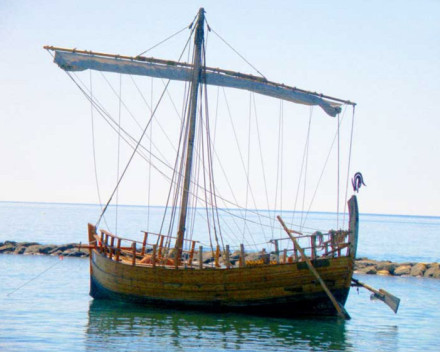
A replica of the Kyrene II. a merchant vessel (Holkas) from the classical era comparable witk the Teklas Burnu
The wreck is an important addition to the rather limited corpus of archaeological evidence for fifth-century Ionia. Furthermore, as the only Classical shipwreck ever to be fully excavated in Aegean waters, this modest vessel promises to shed light on the local trade networks and overall economic condition of Ionia at a time when Athens is thought to have dominated maritime commerce in the Aegean.
Ophthalmoi
Evidence for the use of marble ophthalmoi on Classical merchantmen has only recently come to light. The Institute of Nautical Archaeology's 1999 and 2000 excavation campaigns at Tektag Burnu yielded two marble discs decorated to resemble eyes.
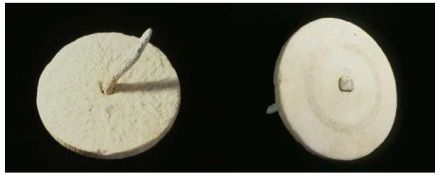
These are the actual ophthalmoi of a Classical Period merchantman: the first known from an ancient shipwreck and the earliest archaeological examples of this decorative element.
Anchors
The ship was carrying at least five wooden anchors when it sank—their remains include the lead stock cores, fragments of wood and ferrous concretions from the anchor teeth
Cargo
While exact figures are impossible, the cargo included: ~200 pseudo-Samian jars (amphoras) of wine and pine tar Butchered meat (valuable and perishable) Fineware ceramics and lamps. An amphora stamp [ERU], suggests that these 200 pseudo-Samian jars may have been produced at nearby Erythrae.*
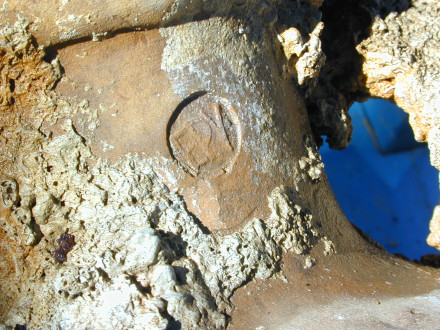
This monogram recalls the fifth-century coinage of nearby Erythrae. The attribution of pesudo-Samian amphoras to Erythrae is particularly intriguing because so little is known about the Classical city.
Provenance
The cargo was likely financed by multiple Ionian merchants. The stamped amphoras suggest commercial branding from Erythrae and possibly Chios or Mende. These cities were known for wine and ceramic production. Coastal Ionian city under Athenian influence.
Ownership
It’s unlikely the ship and cargo had the same owner. Classical Greek trade often involved freight contracts, where shipowners transported goods for multiple clients. The cargo stamps imply diverse merchant origins, not a single financier.
-
Pseudo-Samian amphoras have been found along the eastern coast of Black Sea. Although found all over the Eastern mediteranean, archaeologists did not know where these jars were manufactured. As a result of the 2002 study season, we now have a good idea of where the pseudo-Samian jars from Tektaş Burnu may have been manufactured. Several of the amphoras bear stamps, generally on the neck, on the shoulder, or at the base of a handle. The most revealing stamp is a circle, 2 cm in diameter, framing the Greek letters ERU, located on the neck of the amphora.
Description
Construction method
Hundreds of small fragments from the ship’s wooden hull and its metal fasteners have been retrieved. It was built in a shell-based construction method with pine planks and frames. The hull planking was joined by oak tenons pegged in their mortises, and the frames were fixed to the planking with double-clenched copper nails. The ship was probably constructed using both pegged mortise-and-tenons joints to assemble the planking seams and ligatures to lace their hood ends to the ship’s end posts (Duivenvoorde 13)
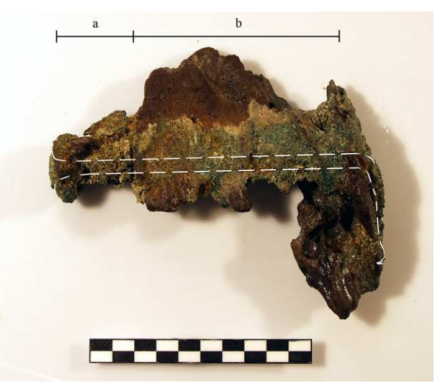
Double-clenched copper nails
Of the fasteners, 81 were positively identified as remnants of double-clenched copper nails that fastened frames to the ship’s hull planking
This method of double-clenching nails remained standard practice in Mediterranean hull construction and continued to be employed until the beginning of the Roman Imperial period in the late first century BC
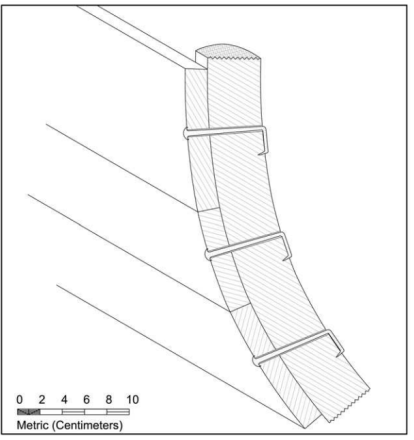
Status
The shipwreck at Tektaş Burnu was located during one of INA’s annual Turkish shipwreck surveys and excavated by INA between 1999 and 2001. The ship sank to a depth of 45 m.
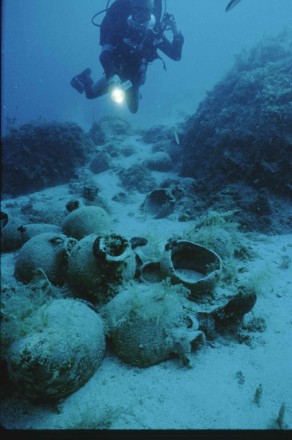
The wreck, which lies along a rugged and remote stretch of coastline southeast of Çesme and west of Sigacik, was located in 1996 during one of INA's annual surveys for shipwrecks.
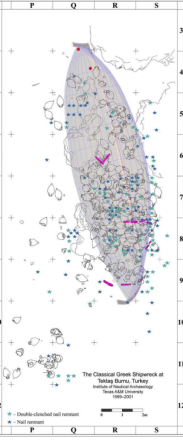
References
- Institute of Nautical Archaeology.
Tektaş Burnu Classical Greek Shipwreck Excavation. - Wendy van Duivenvoorde (2014).
The 5th-century BC shipwreck at Tektaş Burnu, Turkey: Evidence for the ship's hull from nail concretions.
International Journal of Nautical Archaeology 43.1. - Carlson, D.N. (2003).
The Classical Greek Shipwreck at Tekta§ Burnu, Turkey.
American Journal of Archaeology, Vol. 107, No. 4.
pp 581-600.